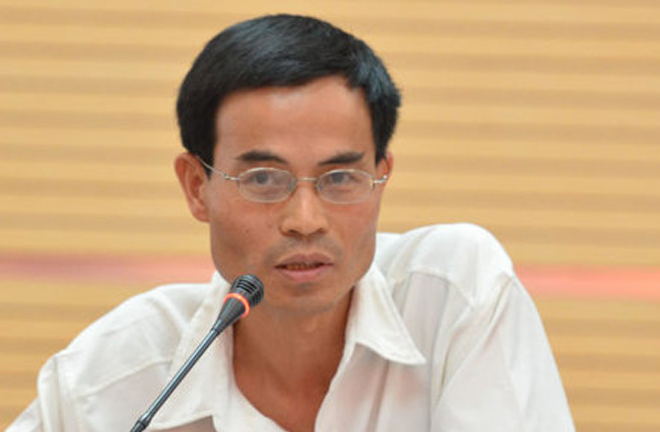LI CHAOQUAN: ‘Goldbach’s Conjecture’ heralds the blooming of Chinese literary reportage
 This year marks the 40th anniversary of the publishing of the work of literary reportage Goldbach’s Conjecture, one of the landmarks in the history of contemporary Chinese literature. Authored by the Chinese writer Xu Chi, and with the notable Chinese mathematician Chen Jingrun as the protagonist, the work was published in the national core journal People’s Literature in January 1978, the same year that China began its reform and opening up and entered the new period of socialist modernization (referred to as the new period hereafter). When it was published, the work became a sensation, heralding the dawn of Chinese literary reportage in the new period.
This year marks the 40th anniversary of the publishing of the work of literary reportage Goldbach’s Conjecture, one of the landmarks in the history of contemporary Chinese literature. Authored by the Chinese writer Xu Chi, and with the notable Chinese mathematician Chen Jingrun as the protagonist, the work was published in the national core journal People’s Literature in January 1978, the same year that China began its reform and opening up and entered the new period of socialist modernization (referred to as the new period hereafter). When it was published, the work became a sensation, heralding the dawn of Chinese literary reportage in the new period.
Poetic narrative language, vivid and moving plot settings as well as motifs that reaffirm the value of intellectuals all endow this work with epoch-making significance. The gate of literary reportage, once was opened, released huge energy. Since then, many authors of novels, poems and prose have joined the trend of literary reportage. This literary form blossomed and a multitude of influential writers and works emerged. A great number of excellent works were produced, such as the Affections for Wild Goose by Huang Zongying, Aspirations Fulfilled by Li You, Motherland Is above All by Chen Zufen, and Chinese Fillies by Lu Guang, Captain by Ke Yan, Dream of a Strong Nation Building by Zhao Yu. The publication of these works made literary reportage an important genre on par with poetry, novel, prose and drama. The quantity, quality and social effect of these works were unprecedented in the history of Chinese literature.
Before Goldbach’s Conjecture was published, literary reportage was not a genre in Chinese literature. In the 1950s and 1960s, they were usually called features or literary news reports, whose authors were not novelists but journalists. Starting with works represented by that of Xu Chi, literary reportage truly became the domain of professional writers as an independent literary genre and form.
In addition, Goldbach’s Conjecture laid the foundation of the fundamental themes, subject matters, and branches of Chinese literature in the new period. The scientific and technological subjects that it created and the typical model scientist character portrayed extended the scope of Chinese literature in the new period.
The first enlightenment that creations of scientific and technological subjects could draw from Goldbach’s Conjecture is that the readability, vividness and poetic features of literary reportage should be emphasized. Goldbach’s Conjecture is sometimes regarded as a poetic work because of its poetry-like aesthetical descriptions. Literary reportage should emphasize character depictions and storytelling—this is the most fundamental inspiration drawn from the Goldbach’s Conjecture.
The second enlightenment is to visualize the abstract, abstruse technical terms and concepts of science and technology. Writings about cutting-edge technologies, such as the Shenzhou manned spacecraft, the Jiaolong manned submersible, high-speed rail, particle collider, robot, supercomputer and quantum communication should draw lessons from Goldbach’s Conjecture.
The third enlightenment is to closely focus on social reality, record and reflect the current era, and help make the common people’s voices heard.
The fourth enlightenment is to follow the principle of being short, plain, fast, novel, realistic and aesthetical. Literary reportage should be the light cavalry, which advocates refined writing within short length. Goldbach’s Conjecture has little more than 18,000 words and such short works today are increasingly rare.
The fifth enlightenment is that both difficulties and broad prospects exist as to creating works with scientific and technological subjects. In terms of such writings, much space needs to be constantly filled.
Goldbach’s Conjecture established the basic norms of Chinese literary reportage. While talking about literary reportage today, we need to go back to this classical work, which made two important contributions to the standardization of norms for literary reportage: one is that it faces the reality directly, does not avoid contradictions or problems and stays in line with the times; the other is that it pursues the unification and integration between reportage, journalism and aesthetics, literature.
In addition to its significance in literary history, Goldbach’s Conjecture has had a substantial impact on the contemporary intellectual, cultural, scientific and technological history of China. At the same time, it has helped the vast majority of Chinese intellectuals to once again win the respect of society.
Li Chaoquan is a Chinese writer and research fellow from the Creation and Research Department of the China Writers Association.
(edited by BAI LE)
